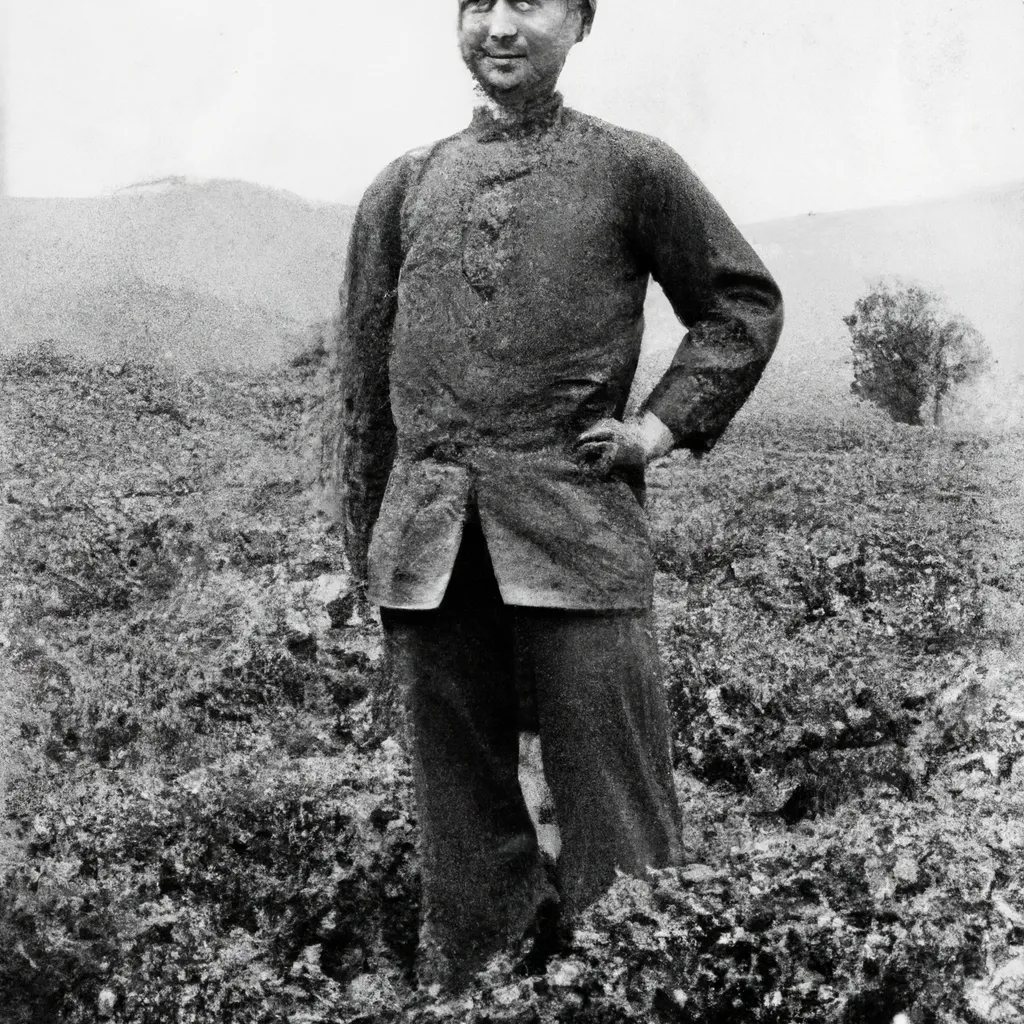Reviving a lost Georgian industry: tea time.

In this photograph taken more than 100 years ago, Lao Jing Zhao proudly poses on his plantation in western Georgia, then part of the Russian Empire. Lao was famous.
History of Tea in Georgia
Some years earlier, this Chinese immigrant had stunned the world when his tea, grown and produced on Georgia's Black Sea coast, won a gold medal at the Paris World's Fair in 1900. For a region that had first planted its tea bushes in 1845 as an experiment, this was a colossal achievement. The humid climate of western Georgia was warm enough to support tea bushes, but cold nights and long winters resulted in slower plant growth than their sunny cousins''from the tropics. It was the slow growth that gave Georgia's tea bushes their unique sweet and delicate flavor.
The decline and rebirth of the tea industry
The hills of western Georgia were ideal for producing small quantities of high quality tea. These color images were taken by the famous Russian photographer Sergei Mikhailovich Prokudin-Gorsky at the end of the Tsarist era. However, after the chaos that followed the October Revolution of 1917, the Georgian economy collapsed and many tea bushes were uprooted to make way for corn and other urgently needed crops.
In the late 1920s, after Georgia joined the Soviet Union, the Kremlin turned its attention to the neglected tea fields''Georgia. Joseph Stalin, and Vladimir Lenin before him, were devoted tea drinkers. Soviet planners, however, wanted the maximum yield and cared little for the subtleties of flavor. They sped up the process of drying tea, hoping to mechanize picking by placing rows of tea bushes and developing picking machines that worked like trimmers. The resulting material was notoriously poor quality, with dry leaves and branches along with valuable buds. Even Soviet propaganda concealed the machines' capabilities, describing them as "firstborns, far from perfect, but work on improving them is continuing." However, the Kremlin's dreams of massive tea harvests began to come true. In the 1980s, the Georgian Soviet Socialist Republic was one of the five largest''tea producers in the world with tonnage, and carried 95 percent of all tea shipments in the Soviet Union.
14 May 2025
14 May 2025
14 May 2025




In 1991, however, things began to crumble. The collapse of the Soviet Union meant the end of a guaranteed market for Georgia's tea farmers, and the poor quality of the products of the time could not compete in the free market even with good and cheap tea from Asia. In the process of civil war and separatist conflicts in the newly independent country of Georgia during the 1990s, tea factories were abandoned and their equipment sold, often as scrap metal. By 2014, tea production in Georgia was just 1,800 tons, nearly 99 times lower than the industry's peak in 1985, when it was''152,000 tons produced.
Renaissance of the tea industry
In the hills of western Georgia today, large parts of old tea plantations are now overgrown with ferns and other wild plants. But the tea bushes are resilient enough to have survived the past three decades amid the dense forest. Another government program to fund the revival of Georgia's former prestige industry has helped restore more than 1,000 hectares of abandoned plantations, clearing them of overgrowth to make way for Soviet and royal tea bushes. Mina Saak, a former office worker from Estonia who now works as a full-time tea farmer on a plantation near the city of Kutaisi. Saak is a member of a group of friends from Estonia and Lithuania,''who left corporate jobs in their home country and moved to Georgia "to work again with their own hands."' Saak and her friends started Renegade Tea Farm, taking advantage of Georgia state aid to establish their leased plantation. Saak says Georgia's tea industry has rebounded a bit since a low point in 2014 and now produces up to 3,000 tons of tea annually. She believes the industry is well positioned for further development.
Organic tea from GeorgiaIn contrast to the tropics, where tea plants are regularly treated with pesticides, it is relatively easy to produce organic tea in Georgia. 'There are no natural enemies for tea plants here because pests and bacteria die off in the winter,' she says.''The majority of the market for high quality organic tea from Georgia is now in Northern Europe and the US. However, there is hope that the brand can return to its former successes as successfully as Georgian wines did after the Soviet Union. Sahak believes the future of the industry lies in a focus on quality over quantity, and Georgian tea producers 'need to get back to the roots of the industry'.
In contrast to the tropics, where tea plants are regularly treated with pesticides, it is relatively easy to produce organic tea in Georgia. 'There are no natural enemies for tea plants here because pests and bacteria die off in the winter,' she says.''The majority of the market for high quality organic tea from Georgia is now in Northern Europe and the US. However, there is hope that the brand can return to its former successes as successfully as Georgian wines did after the Soviet Union. Sahak believes the future of the industry lies in a focus on quality over quantity, and Georgian tea producers 'need to get back to the roots of the industry'.
Comment
Popular Offers

Subscribe to the newsletter from Hatamatata.com!
Subscribe to the newsletter from Hatamatata.com!
I agree to the processing of personal data and confidentiality rules of Hatamatata










